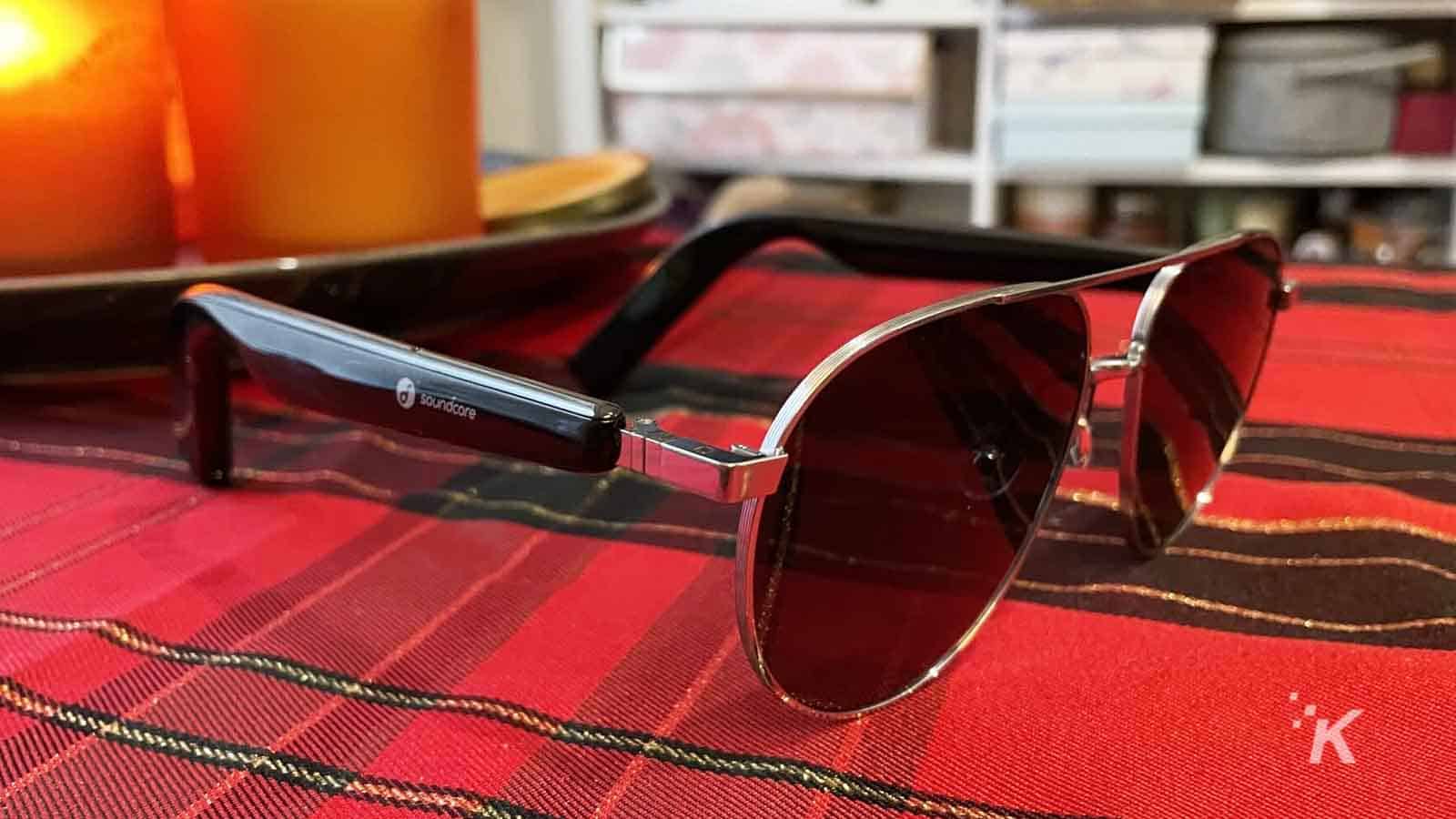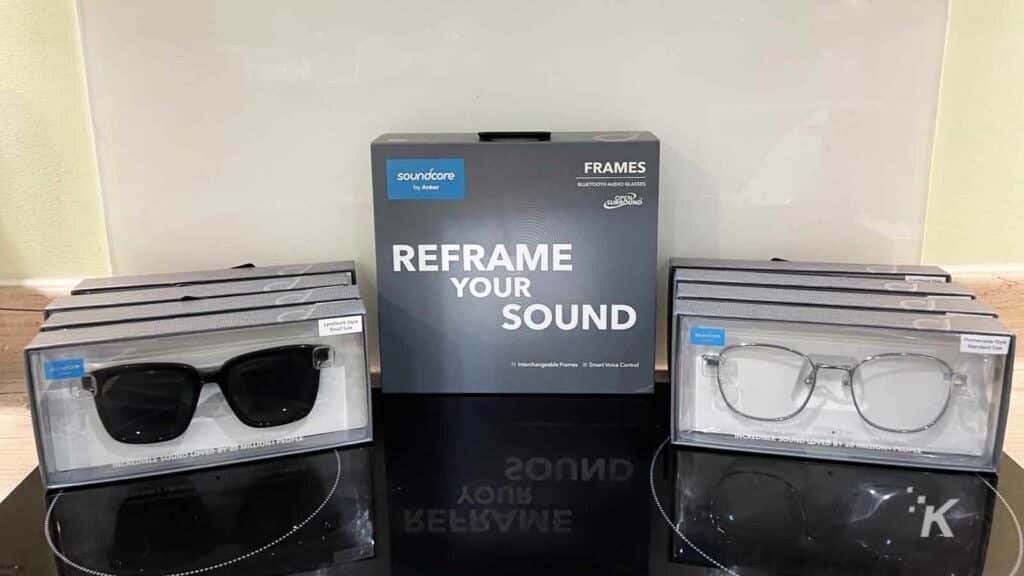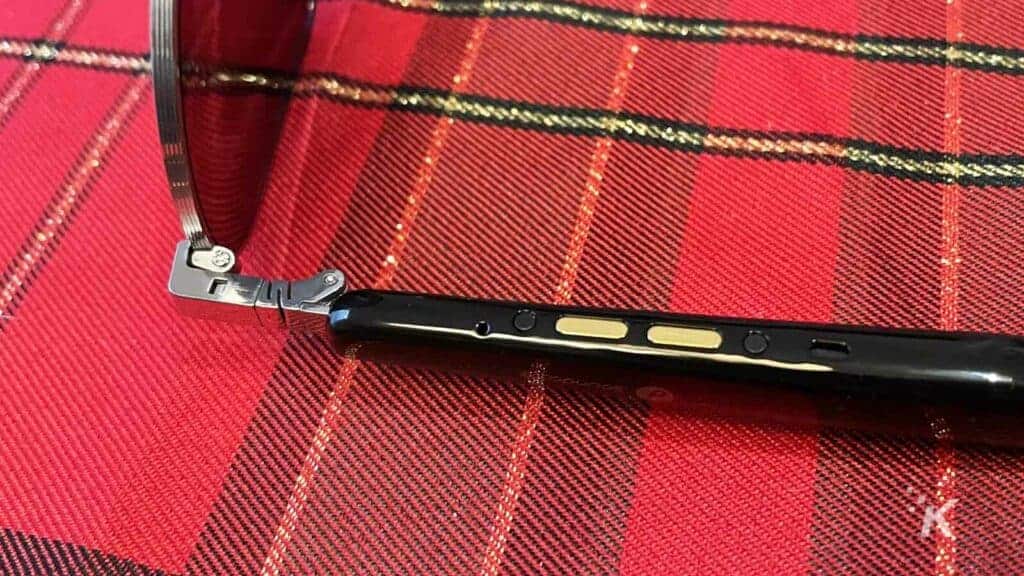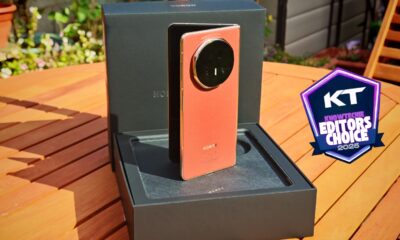Reviews
Review: Anker’s SoundCore Frames
For $200, it’s hard to truly recommend these, but the concept is great.

Just a heads up, if you buy something through our links, we may get a small share of the sale. It’s one of the ways we keep the lights on here. Click here for more.
[letsreview postid=”173824″]
For reasons that ought to be apparent to anyone with a brain and working corneas, face-worn gadgetry hasn’t really taken off. The most notable failure in this category was the hilariously short-lived* Google Glass, which inspired almost universal derision (with its owners dubbed “glassholes“) and, in some cases, violence.
We can look earlier still to Dog the Bounty Hunter, who sported a set of heinous-looking MP3 player shades (the Oakley Thump, if you’re curious) as he rounded up the ne’er-do-wells of Hawaii. As if the peroxide mullet wasn’t bad enough.
Spare a thought then for Anker, which has dipped a brave toe into this field with its latest offering, the SoundCore Frames. These Bluetooth-enabled smart glasses allow you to take calls, listen to music, and interact with your chosen voice assistant without making it evident you’re wearing headphones.
Design and Customization
Anker isn’t really a “fashion” brand. That’s not to say its stuff isn’t well designed or attractive. Much of it is. Rather, its industrial design tends to stick to the utilitarian.
The SoundCore Frames are different. Aesthetics matter when it comes to wearable tech, and that’s doubly true when you’re wearing the product on your face.
READ MORE: Review: The Anker Soundcore Sleep A10
Anker has tried to make this look as unobtrusive as possible, to the point where you can’t immediately tell it’s a tech product. They just look like normal glasses.

The technological wizardry itself is confined to the somewhat chunky “arms” of the glasses and includes the speaker system, the microphones, the battery, and all miscellaneous circuitry. These clip on to your chosen frame, and Anker offers a range of designs and sizes, from a (presumably) toddler-friendly small to a normal person large.
I have to give Anker some credit when it comes to the design of the frames. It’s tried to cover its bases, with styles that cater to hipsters and serial killers alike, and everyone in-between. The range is genuinely expansive, and switching between designs is a doddle. In a matter of seconds, you can go from Death Cab for Cutie to Jeffrey Dahmer, and even cosplay as your dad.
Each style has a name. There’s the standard “Tour Style” and “Harbour Style” frames, which look and feel like any sunglasses you ever bought from Warby Parker. Clip on the “Festival Style” frames and you can pass as someone who went to Burning Man to find themselves.
The “Promenade Style” frames make you resemble Joseph Seed, the murderous cult leader in Far Cry 5 (man-bun and tattoos supplied separately). “Wander Style,” meanwhile, could have been plucked from the face of Roy Orbison himself.
The lenses are, sadly, purely cosmetic, although Anker says you can replace them with prescription ones if you’re so inclined. It’s a shame, and a bit weird, that they didn’t launch with prescription offerings out of the gate. Requiring near-sighted punters to make an in-person trip to the optician is a major hassle.
Sound Quality and Usability

So, what do they sound like? Reasonably well, considering the fact that these don’t actually enter the ear canal. They’re hardly audiophile-grade, but they’re still eminently serviceable for day-to-day listening.
You don’t get the loudness or the quality of bone-conducting headphones, but I can live with that. Those tend to require a vice-like grip on your skull to work, making them uncomfortable for sustained listening. These are as pleasant to wear as normal glasses, and after a while, you forget you’re even wearing them.
External sounds inevitably bleed through, and the Frames struggle to overcome the roar of passing cars, but the positioning of the integrated speakers means any outward sound leakage is minimal.
Those close to you might be able to hear your music, but you won’t disturb those further afield. The companion app also offers a “quiet mode,” which is designed to reduce audio leakage further.
The SoundCore Frames have a bassy sort of sound, making it well-suited for the kind of thumping dubstep that typically accompanies morning runs. It struggled with softer, more intricate pieces, although was still perfectly listenable. You can also select between a variety of genre-specific equalizer presets through the app.
On the side of the frames sits a touch-sensitive strip which is used to control playback, activate Siri, adjust volumes, and so on. Again, this can be customized within the app. It’s responsive, but not too responsive that you routinely interrupt your listening with unintentional swipes.
Price and Conclusion

Anker has already launched the SoundCore Frames in the US. The basic kit costs $200, with additional frames retailing for $50, making it a pricey proposition. In the UK, they retail for £150 with frames costing £50 apiece.
Although the SoundCore Frames are, on a functional and design level, quite brilliant, I imagine Anker will struggle to sell many. The price is a major issue. For roughly the same amount, you can get Sony’s venerable last-generation WH-1000MX3 headphones, which sound better and feel less gimmicky.
And that’s the problem. The engineering on the SoundCore Frames is genuinely quite clever. But even the cheapest pair of over-ear headphones surpass it when it comes to noise cancellation, battery life (which is a dismal 5.5 hours), and noise leakage.
The SoundCore Frames look good, however, and if you’re buying these as a fashion accessory, then they make sense. I can also imagine them being used in situations where stealth is necessary, like at a job where you’re unable to wear conventional audio gear, or in an exam hall where you want to cheat like Boris Johnson without tipping off an invigilator.
It’s hard to recommend these for everyday use, however. At least, not while they cost $200. Ultimately, Anker is charging for engineering brilliance and style. Do these attributes supersede basic audio quality expectations and affordability? That’s up to you.
Despite this tepid enthusiasm, I at least have to congratulate Anker on creating a set of “smart” glasses that won’t drive strangers to physical violence, or at the very least, mockery. For decades, this category has labored under a cloud of sheer naffness. With devices like the SoundCore Frames, that cloud may begin to shift.
[letsreviewaffiliate url=”https://www.tkqlhce.com/click-7857194-13872771?url=https%3A%2F%2Fus.soundcore.com%2Fcollections%2Fframes%2Fproducts%2Fa3600013″ text=”see at soundcore” size=”small” rel=”nofollow” target=”samewindow” accent=”#c7ace2″ border=”off”]
[letsreviewaffiliate url=”https://amzn.to/3F2WM7i” text=”see at amazon” size=”small” rel=”nofollow” target=”samewindow” accent=”#c7ace2″ border=”off”]
[letsreviewaffiliate url=”https://shop-links.co/cgdAtEwyLh2″ text=”see at best buy” size=”small” rel=”nofollow” target=”samewindow” accent=”#c7ace2″ border=”off”]
Editors’ Recommendations:
- Review: PreSonus Revelator USB microphone – a solid mic with pro-level features
- The SteelSeries Apex 3 TKL gaming keyboard is cheap in price, not quality
- Review: EPOS H3 Hybrid headset – excellent sound and great versatility
- Review: Bowers & Wilkins PI7 true wireless earbuds – great wireless earbuds with a twist
Just a heads up, if you buy something through our links, we may get a small share of the sale. It’s one of the ways we keep the lights on here. Click here for more.
* Technically, Google Glass continues as an enterprise product, although it has long abandoned selling them to consumers.
































Wayne G
June 10, 2023 at 9:43 pm
Matthew, Now that the Soundcore glasses review is done…..do you still wear them? If not I am interested in purchasing all the swag you received. I love the Soundcore glasses, and they discontinued them because they were not making money (I have heard). I live in Clifton, New Jersey USA. Let me know!